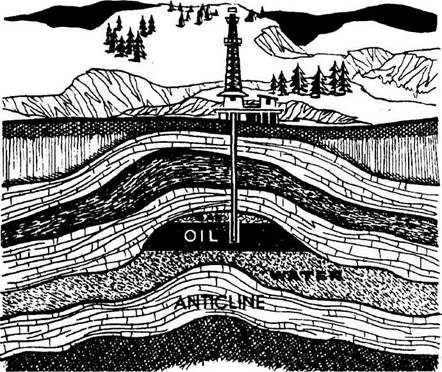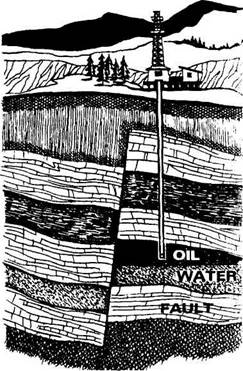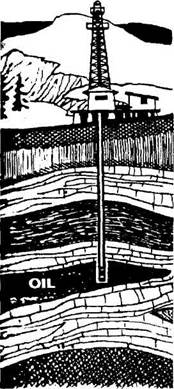Discovering an Oil Field
Since 1850, the search for oil has been endless. Generally, there is nothing above ground which can show exactly where oil might lie below. The oil explorer today has to be a detective tracking down all the clues science can give him. He is helped by many different teams of experts, but the decision to drill is still a big risk. Do you know what are the people who try to determine where oil may be found? Can you explain what makes oil exploration a risky business? The people who try to determine where oil may be found are called geologists. They try to unlock the secrets beneath the earth's surface by studying the formation of rock strata. They have learned a good deal about where oil is not and somewhat less about where it is. They know that three things must exist fairly close together beneath the earth's surface at any place where oil is likely to be found. First, there must be a bed of what once was undersea mud in which bodies of billions of sea creatures had perished. The geologist detects this bed by the shells and skeletons left imbedded in the rock. Second, a layer of porous rock - sandstone, limestone, or dolomite - must be near enough so that oil, forced by water pressure, can enter the pores. Unless it is blocked by something, oil may travel a long way through the porous rock, called oil sand. It may even spread out. In the third place, the layer of oil sand must be surrounded by a layer of dense rock through which the oil can't be squeezed no matter Chapter Two how high the water pressure is. Try to imagine, if you can, making a huge jelly sandwich by squeezing runny jelly into six or seven layers of unevenly cut bread; parts of the bread soft, and parts hard and crusty. If, when you finished, you cut off a slice, you would see, that the jelly was in uneven spots here and there, throughout the whole sandwich. Some would have soaked into the soft bread up to where it was stopped by the crusty parts. Oil is caught in traps underground in somewhat this same way. It soaks into the soft rock, and is stopped by hard layers. Traps are what oil explorers try to find.This formation which blocks the oil and keeps it from travelling any farther, may be an anticline, a fault, or a stratigraphic trap.
An anticline is a place where the earth's crust was once pushed up to form an arch. This arch may now be buried far below the earth's surface. Oil travelling along a sandstone stratum flows to the top of the arch. There it is imprisoned by water pressure from below, and there it will stay forever, until a driller can find and tap it. A fault is a place where the earth's crust has slipped, breaking the layers of underground rock. Thus a layer of dense rock may have Exploring for Petroleum
been pushed up or down, blocking a layer of sandstone. When the oil seeping through the sandstone reaches the rock layer it finds a dead end. Unable to move ahead because of the hard rock, it cannot move back because of water pressure behind it. So a pool is formed. A stratigraphic trap is a formation of two layers of dense rock separated by a layer sandstone, like a sandwich. Somewhere the two layers of hard rock pinch together and keep the oil in the sandstone from going farther. This also forms an oil pool.
|








